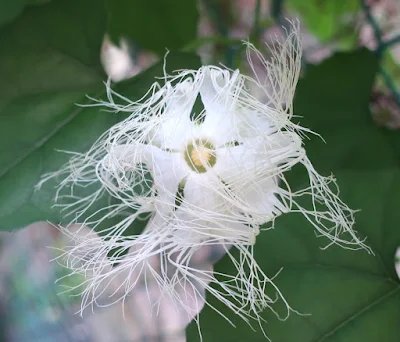Plants and Flowers in Tokyo & Japanese Culture by Kei Narujima 東京の草花&つぶやき - なるじまけい
Hi! I'm Kei Narujima. This is a blog about flowers/plants🌼and bugs🐛, and sometimes art and unique Japanese culture that make you smile or think (or so I hope)!! こんにちは。花や虫、そして時々日本の文化などについて書いてます😊。税務英語については https://zeimueigo.blogspot.com/ をご覧ください。
Chinese Cucumber and Pumpkin Beetle 黄烏瓜と黒瓜葉虫
Japanese Taj Mahal and Family War 本願寺は父子戦争の結果
This is Tsukiji Hongwanji temple (whose website is only in Japanese) in Tsukiji Tokyo. It was first built in 1617 but rebuilt in 1934 after being burnt down in a fire in 1923 based on the design by Chuta Ito, a Japanese architect who studied Indian architecture. So, no wonder that I was reminded of the Taj Mahal when looking at this Japanese temple.
Kyoto has several Hongwanji temples including the two most famous ones, i.e., Nishi Hongwanji temple (the head temple) and Higashi Hongwanji temple, and they have an interesting background as outlined in the table below the pictures of Tsukiji Hongwanji temple. The term "nishi" means west while "higashi" east.
 |
| 2020/1/17 Japanese Taj Mahal? タージマハル? |
Winter Cherry (Cerasus x Parvifolia/Cerasus Subhirtella) フユザクラ(冬桜)
英語の後に日本語が続きます。
The winter cherry (Cerasus x parvifolia 'Fuyu-zakura') is a crossbreed of Cerasus incisa and Cerasus speciosa. The cherry differs from other cherry trees in its time of blossoming. The winter cherry blossoms twice a year, in early April and in winter (from October to December), because of which the cherry tree is called "winter cherry" in Japan.
It has another name "koba zakura," which translates into "small leaf cherry" for its relatively smaller leaves. The winter cherry blossoms are less gorgeous but stay longer than other cherry blossoms, which generally fall in two weeks.
Some say when passing by a winter cherry tree that it's silly, blooming out of season but at such times I always say in my mind "It's you who are silly😝."
 |
| 2021/11/25 |
 |
| 2022/12/9 |
Japanese Cornel (Cornus Officinalis) サンシュユ(山茱萸)
The Japanese cornel (Cornus officinalis) is native to China, Korea, and Japan and can be found across Japan. The tree produces umbels of bright yellow flowers from March to April and berries that get redder from October to November.
What is "Mushin"? 無心とは?
Have you ever heard of the term "mushin"? It's a Zen word, written as "無心" in Japanese Chinese characters (kanji). So, you may have heard of it if you're interested in Zen and/or Buddhism. Mushin can literally translate into "no mind" because 無 means non-existence and 心 mind. According to Kojien dictionary, mushin means as follows:
Wintersweet (Chimonanthus Praecox ‘Luteus’/Chimonanthus Praecox F. Concolor) ソシンロウバイ(蘇秦蝋梅)
These are wintersweet blossoms. The plant is native to China and came to Japan at the beginning of the Edo period (1603 to 1868). Wintersweet blooms in January and February and of several types, you would mostly see Chimonanthus praecox ‘Luteus’/Chimonanthus praecox f. concolor in Tokyo. The blossoms of this type are yellow in their entirety while another type, Chimonanthus praecox, has a purple red inner part. Despite their beauty, all parts of the wintersweet are toxic.
Pink Chinese Plum/Japanese Apricot Blossoms (Prunus Mume) 紅梅
Chinese plum/Japanese apricot trees (Prunus mume) are native to China and came to Japan about 1,500 years ago. Since then, the tree has been cherished (e.g., blossoms viewed and fruits eaten) by Japanese people. Today, a symbol of spring in Japan is cherry blossoms but during the Nara period (710 to 794), it was definitely Prunus mume blossoms as supported by the fact that Mannyōshū (i.e., the oldest extant collection of Japanese poetry compiled during the Nara period) includes more poems about plum blossoms than those about cherry blossoms.
Japanese Maple Seeds 楓(カエデ)の種コプター
Japanese maple trees are known for autumn leaves but their fresh green leaves and reddish green seeds (which always remind me of Doraemon bamboo copter) in May make you feel fresh and the brown seeds surrounded by the red leaves in autumn make you feel calm, don't they?
Japanese Andromeda (Pieris Japonica) アセビ(馬酔木)
Japanese andromeda is native to, and can be found across, Japan. The plant usually produces white flowers but Japanese andromeda 'Rosea' (Pieris japonica f. Rosea) produces pink flowers. The plant's Japanese name is "asebi (馬酔木)," which translates into "a tree which makes horses drunk" because horses that eat this plant look drunk due to a toxin contained in it. Deer in the Nara Koen park in the Nara prefecture don't eat this plant (how clever they are!), resulting in many Japanese andromeda trees left growing in the park.
Japanese Andromeda 'Rosea' (Pieris Japonica F. Rosea) アケボノアセビ(曙馬酔木)
Japanese andromeda usually produces white flowers but this type, i.e., Japanese andromeda 'Rosea' (Pieris japonica f. Rosea), produces pink flowers. The plant's Japanese name is "asebi (馬酔木)," which translates into "a tree which makes horses drunk" because horses that eat this plant look drunk due to a toxin contained in it. Deer in the Nara Koen park in the Nara prefecture don't eat this plant (how clever they are!), resulting in many Japanese andromeda trees left growing in the park.
Hydrangeas in Winter 冬の紫陽花
Hydrangeas in June are pretty. Hydrangeas in November season-defy. Hydrangeas in December signify enduring beauty.
Chinese Cucumber and Pumpkin Beetle 黄烏瓜と黒瓜葉虫
英語の後に日本語が続きます。 Chinese cucumbers (Trichosanthes kirilowii) are native to China and Japan. They're dioecious, producing white "hairy...

-
英語の後に日本語が続きます。 I read "A Pale View of Hills" by Kazuo Ishiguro a few years ago. The book was my second Ishiguro's book after...
-
Japanese follows English. 英語の後に日本語が続きます。 Is he being boiled to death? (This is a revised version of the story originally posted on Se...





.JPG)













